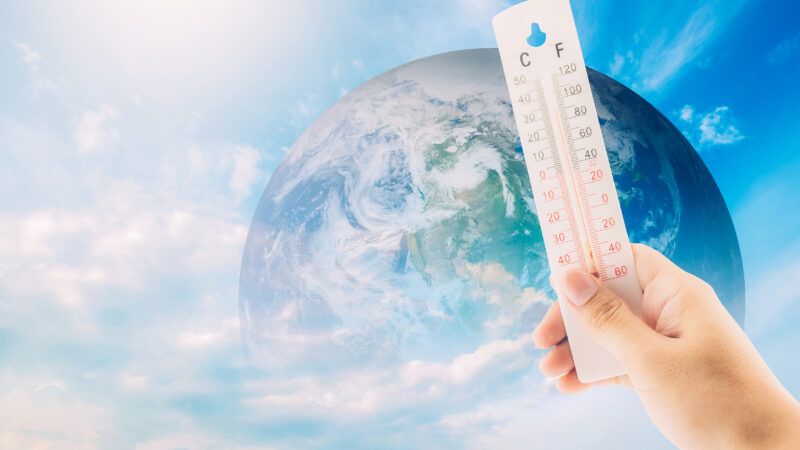2020 Is in a Near Tie for Hottest Year in the Modern Temperature Record
The last seven years have been the warmest seven years on record.

Last year is either in a tie for the hottest year in the modern temperature record or a close second place, according to datasets just released by various global temperature monitoring groups.
Earlier this month, the European Copernicus Climate Change Service reported that "2020 was tied with the previous warmest year 2016, making it the sixth in a series of exceptionally warm years starting in 2015, and 2011-2020 the warmest decade recorded." 2020 was 0.6°C warmer than the standard 1981–2010 reference period—and around 1.25°C above the period from 1850 to 1900.
NASA's Goddard Space Studies Institute similarly agrees that the "Earth's global average surface temperature in 2020 tied with 2016 as the warmest year on record." GISS also found that Earth's average temperature has risen more than 2°F (1.2°C) since the late 19th century.
Some other climate research groups say that 2020 was a close second to 2016. For example, the University of Alabama in Huntsville's satellite data has 2020 just behind 2016 and just ahead of 1998. ("Considering the uncertainty of the measurements," the researchers note, "these three years could be considered as tied for the warmest year of the 42-year record.") The National Oceanic and Atmospheric Administration's National Climatic Data Center also puts 2020 in second place: "just 0.04 of a degree F (0.02 of a degree C) cooler than the 2016 record." And the independent Berkeley Earth research group has concluded that 2020 was the second warmest on Earth since 1850 if you take both land and ocean data into consideration—but it adds that "2020 was definitively the warmest year on record for land temperatures, nearly 2 degrees Celsius above the pre-industrial average."
The U.K.'s Met Office also ranks 2020 as the second warmest year, just below the global record set in 2016. The Met Office researchers note that 2016's temperatures "were elevated by El Niño conditions"—when the surface waters in the central and eastern Pacific Ocean become significantly warmer than usual—"which can increase global temperatures by around +0.2°C." As it happens, the advent of a La Niña phase in the Pacific Ocean during the last half of the year actually lowered 2020's global average temperature.
In my November 2019 article "What Climate Science Tells Us About Temperature Trends," I cited a team of Chinese atmospheric scientists who found that the high average global temperatures in 1998 and 2016 had been boosted by super El Niños in those years. In 1998, the El Niño event added 0.18°C to the long-term warming trend; in 2016, it added just 0.06°C. In other words, it took a lot less heat to boost the global average temperature in 2016 to slightly above the average in 1998. It is, therefore, significant that even a cooling La Niña could could not keep 2020 from basically tying 2016 as the warmest year in the modern temperature record. As the Chinese researchers observed, their analysis "implies that warmer years like 2014–2016 may occur more frequently in the near future."
"The last seven years have been the warmest seven years on record, typifying the ongoing and dramatic warming trend," said GISS Director Gavin Schmidt in a press release. "Whether one year is a record or not is not really that important—the important things are long-term trends. With these trends, and as the human impact on the climate increases, we have to expect that records will continue to be broken."


Show Comments (84)